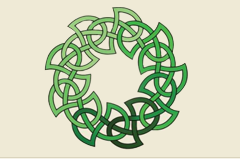Article Title
So Old and So New: Memory and Expectation in the Fantastic Works of C.S. Lewis and J.R.R. Tolkien
Abstract
For both C.S. Lewis and J.R.R. Tolkien, the realms and stories of Faërie and the fantastic, in addition to being entertaining were revelatory: insights about the very nature of Reality come through the images and narratives of these secondary worlds, in which the perception of time often plays a major role. Examining such issues as time and ultimate reality in Lewis’s and Tolkien’s works must take into account each author’s devout and profound Christian faith, oriented around the eucatastrophe of the Gospel message radiating backwards and forwards throughout human history. This faith thus shaped how they understood the past, present, and future: Tolkien looked backward and Lewis forward. In The Chronicles of Narnia, and The Space Trilogy, and Lord of the Rings and The Simarillion, each author worked within these theological boundaries in the “Primary World”, believing that he was drawing upon, as well as revealing, Reality in creating as he did. St. Augustine’s meditation on the perception of time as memory and expectation frames this exploration of Lewis and Tolkien’s understanding of the relationship between faith and Faërie, leading, as always, “further up and further in.”
Recommended Citation
Robinson, Megan J.
(2010)
"So Old and So New: Memory and Expectation in the Fantastic Works of C.S. Lewis and J.R.R. Tolkien,"
Inklings Forever: Published Colloquium Proceedings 1997-2016: Vol. 7, Article 18.
Available at:
https://pillars.taylor.edu/inklings_forever/vol7/iss1/18
Included in
English Language and Literature Commons, History Commons, Philosophy Commons, Religion Commons

